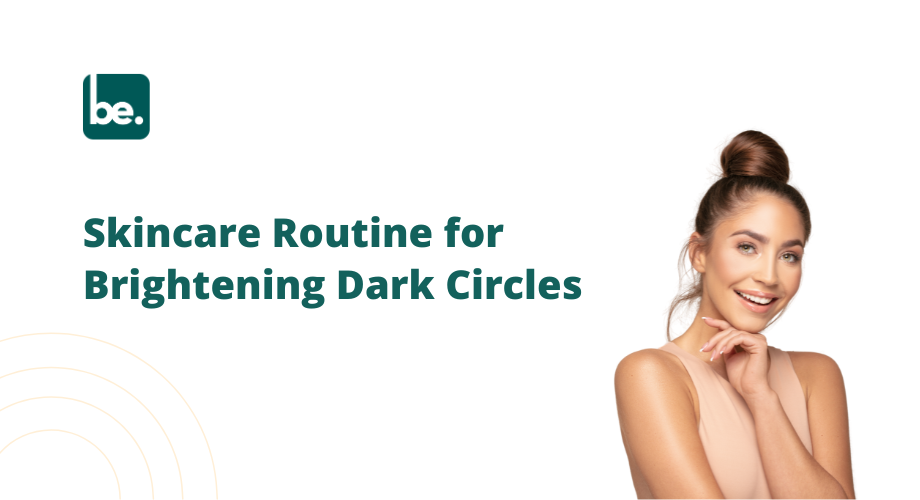
Identifying Your Skin Type: A Step-by-Step Guide
The Importance of Knowing Your Skin Type
Understanding your skin type is crucial for developing an effective skincare routine. Different skin types have different needs and require specific products and treatments. By understanding your skin type, you can address its unique concerns and maintain its health and vitality.
Knowing your skin type can also help you identify the underlying causes of any skin issues you may be experiencing. It allows you to make informed decisions about the products you use and the lifestyle choices you make, ensuring that you are taking the best possible care of your skin.
Additionally, understanding your skin type can help you prevent future skin problems. By knowing what works best for your skin, you can avoid using products or engaging in habits that may cause irritation, breakouts, or other undesirable effects. It empowers you to make choices that support your skin's health and overall well-being.
The Basic Skin Types:
Understanding the characteristics of each skin type can help you determine which category your skin falls into:
1. Normal skin: Normal skin is well-balanced, neither too oily nor too dry. It has a smooth texture, small pores, and a healthy complexion. People with normal skin usually experience minimal sensitivity and can tolerate a wide range of skincare products.
2. Dry skin: Dry skin lacks moisture and may feel tight, rough, or flaky. It may appear dull and have visible fine lines and wrinkles. Dry skin is prone to irritation and may become red or itchy. It requires extra hydration and nourishment to maintain its health and prevent premature aging.
3. Oily skin: Oily skin produces excess sebum, making it look shiny and greasy. It often has enlarged pores and is prone to acne breakouts, blackheads, and whiteheads. Oily skin requires products that can control oil production and keep the pores clear to prevent clogged pores and blemishes.
4. Combination skin: Combination skin is a mix of different skin types. It is characterized by an oily T-zone (forehead, nose, and chin) and drier cheeks. Combination skin may require a combination of skincare products to address the specific needs of different areas.
How to Perform a Skin Type Test at Home
Performing a skin type test at home can help you determine your skin type accurately. Here's a simple method you can try:
1. Start with a clean face: Wash your face with a gentle cleanser and pat it dry.
2. Wait for an hour: Allow your skin to settle and return to its natural state for about an hour.
Avoid applying any products during this time.
3. Observe your skin: Look for any signs of oiliness, dryness, or tightness. Pay attention to how your skin feels and looks.
4. Test different areas: Gently press a tissue on different parts of your face - forehead, nose, cheeks, and chin. Note any oiliness or dryness on the tissue.
Based on your observations, you can determine which skin type category your skin falls into. Remember that your skin type may change over time due to various factors, so it's important to re-evaluate periodically.
Factors That Can Influence Your Skin Type
1. Genetics: Your genes play a significant role in determining your skin type. You may inherit
certain skin traits, such as oiliness or dryness, from your parents.
2. Environment: The climate and environmental conditions can affect your skin. For example, living in a dry or humid climate can impact skin hydration levels.
3. Hormones: Hormonal changes, such as those that occur during puberty, pregnancy, or menopause, can affect your skin's oil production and overall balance.
4. Lifestyle and habits: Your lifestyle choices and habits, such as diet, sleep patterns, stress levels, and skincare routine, can influence your skin type. For instance, a poor diet or inadequate sleep can contribute to skin issues.
5. Skincare products: The products you use on your skin can also impact its condition. Using harsh or incompatible products can lead to dryness, irritation, or excessive oil production.
It's important to be aware of these factors and make adjustments accordingly to maintain the health and balance of your skin.
Customizing Your Skincare Routine to Your Skin Type
Once you have identified your skin type, you can tailor your skincare routine to meet its specific needs. Here are some tips to help you get started:
1. Cleansing: Use a gentle cleanser suitable for your skin type to remove dirt, oil, and impurities without stripping away natural moisture. Avoid harsh cleansers that can disrupt the skin's balance.
2. Moisturizing: Moisturize your skin daily to keep it hydrated and protected. Choose a moisturizer formulated for your skin type - lightweight for oily skin and richer for dry skin. Combination skin may require different moisturizers for different areas.
3. Sun protection: Regardless of your skin type, it's essential to protect your skin from the sun's harmful rays. Use a broad-spectrum sunscreen with an SPF of 30 or higher, and reapply every two hours when outdoors.
4. Targeted treatments: Address specific skin concerns, such as acne, aging, or hyperpigmentation, with targeted treatments. Look for products with ingredients that address your skin's needs, such as salicylic acid for acne-prone skin or hyaluronic acid for dry skin.
5. Adjust as needed: Monitor your skin's response to the products you use and make adjustments as needed. If a product causes irritation or doesn't deliver the desired results, switch to a different one.
Remember, consistency is key when it comes to skincare. Stick to your routine and give your skin time to adjust to the products. Be patient and observant, and you'll be able to refine your skincare routine to best suit your unique skin type.







